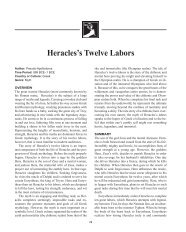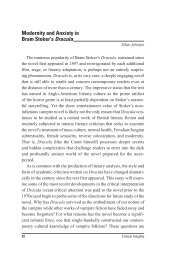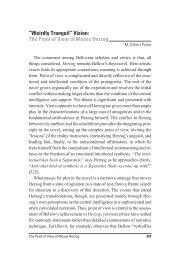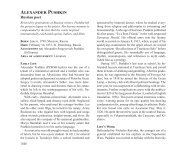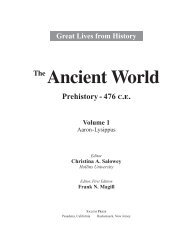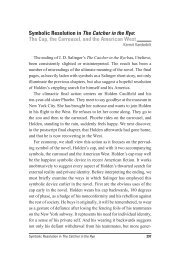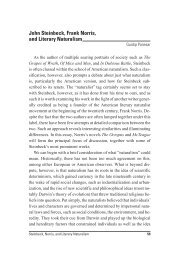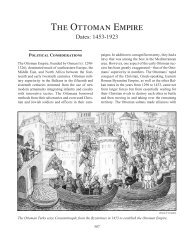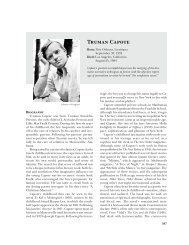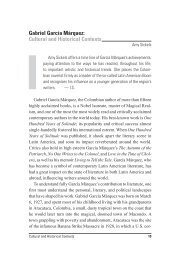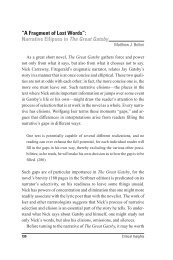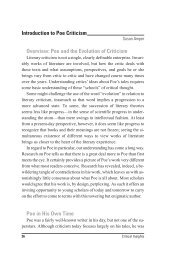The Historical and Social Context of Gwendolyn ... - Salem Press
The Historical and Social Context of Gwendolyn ... - Salem Press
The Historical and Social Context of Gwendolyn ... - Salem Press
Create successful ePaper yourself
Turn your PDF publications into a flip-book with our unique Google optimized e-Paper software.
<strong>The</strong>n <strong>of</strong>f they took you, <strong>of</strong>f to the jail,<br />
A hundred hooting after.<br />
And you should have heard me at my house,<br />
I cut my lungs with my laughter<br />
(1-4)<br />
This takes a highly ironic turn several stanzas later as a mob drags the<br />
man from jail <strong>and</strong> hangs him from a tree:<br />
And they laughed when they heard you wail.<br />
Laughed,<br />
Laughed.<br />
<strong>The</strong>y laughed when they heard you wail.<br />
(85-88)<br />
Although Pearl May Lee may be a victim <strong>of</strong> both her lover’s racism<br />
<strong>and</strong> that <strong>of</strong> the murderous whites, Brooks provides her with a powerful<br />
voice through synecdoche <strong>and</strong> metonymic imagery. Pearl May Lee addresses<br />
her dead lover: “You paid with your hide <strong>and</strong> my heart . . .”<br />
(98). His body is destroyed <strong>and</strong> her emotions are damaged. In addition,<br />
she addresses him as “Brother,” rather than lover (93-94). He is one <strong>of</strong><br />
many black men who have been caught up in white violence. Finally,<br />
Pearl May Lee treats whites like objects, not individuals, reciprocating<br />
the treatment blacks have received. <strong>The</strong> white woman has no name <strong>and</strong><br />
is described as a “taste <strong>of</strong> pink <strong>and</strong> white honey” (99).<br />
Black men treating black women as objects is critiqued, among<br />
other things, in “<strong>The</strong> Sundays <strong>of</strong> Satin-Legs Smith,” a highly satirical<br />
third-person portrait <strong>of</strong> a black man. <strong>The</strong> man’s limitations are a consequence<br />
<strong>of</strong> his secondary status in white America. D. H. Melhem points<br />
out that, like Eliot’s “<strong>The</strong> Love Song <strong>of</strong> J. Alfred Prufrock,” Brooks’s<br />
portrait “deals with an antiheroic vision, but it places the protagonist<br />
solidly in his environment” (<strong>Gwendolyn</strong> Brooks 34). While “Prufrock”<br />
may be an interior monologue <strong>of</strong> Prufrock’s musings, “<strong>The</strong> Sundays <strong>of</strong><br />
26 Critical Insights



